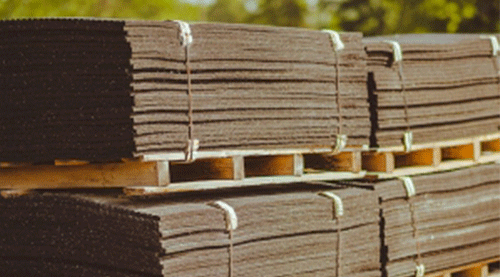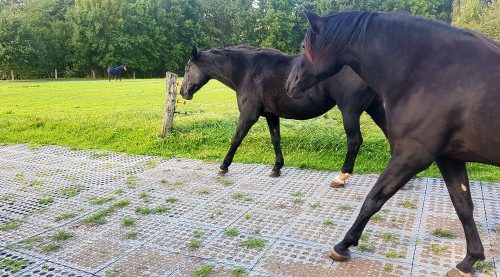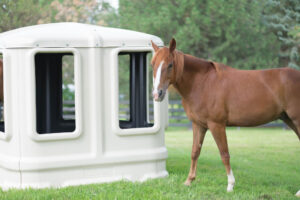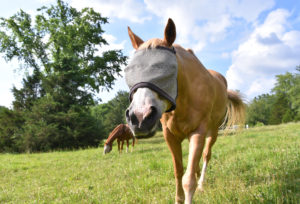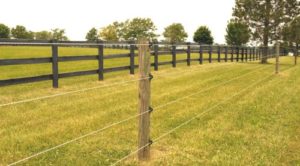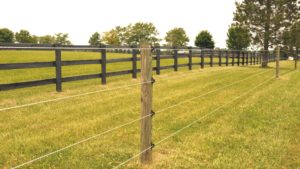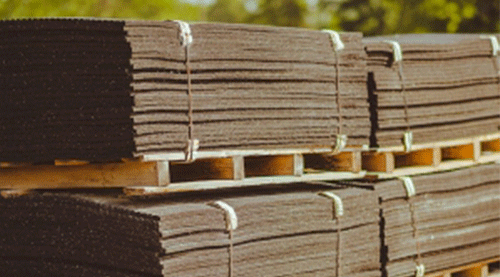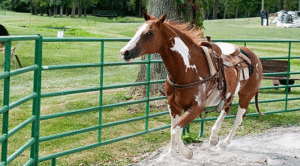
Tips for Nighttime Turn Out
Lisa Kiley – June 2024
Originally published in Horsemen’s Corral Magazine
Now that summer is upon us and we are getting some warm days, you may want to consider switching your horse’s regular turnout schedule from daytime turnout to overnight. There are several reasons to consider making this change as part of your stable management program. The first and most obvious is that horses generally prefer the cooler temperatures of the evening in the summer and prefer to lounge in their stalls during the day. It can help prevent coat bleaching, sunburns and pesky bug bites. From a convenience standpoint, having horses out at night typically means tidier stalls that save on shavings and the horses get extra grazing time saving on forage costs. Here are some tips to think about before changing your horse’s turnout schedule:
Secure Fencing – While horses should always have secure horse safe fencing when being turned out, it is even more important when horses are out overnight. Often when horses are on daytime turnout schedules, they are monitored. At night, an issue might go unnoticed until the morning, or if a horse were to get out, they would not be highly visible on roadways, which could lead to devastating consequences.
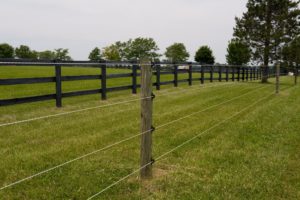
Check out our Cashmans Elite Fencing System!
Before turning out at night, ensure that the horse’s pasture is secure and check it frequently. Adding electrified rope fencing is a great way to add a layer of security to the fence. Utilizing pastures that are not road facing or investing in a double fence can add a layer of security as well. Use heavy gates and double-check gate latches before going in for the night. Keeping front gates closed at night is also a precaution to keep horses safe on the property.
Acclimating the Herd – Horses that go out together at night should be a well-established group that has been monitored during daytime hours. By taking the time to make sure the turnout groups are a good fit, it helps keep the horses safer and less likely to be injured. This also goes for horses in adjacent pastures if they can communicate over the fence. Taking some time to watch how horses are getting along is always important. Similarly, the horses need to acclimate to the new schedule. In the spring, horses should slowly increase time out on grass during the day so that when switching the horses aren’t going from just a few hours of turnout to eight plus hours of turnout all at one time. This will help prevent issues with laminitis and colic.

Check out our new Behlen Shelter kits!
Shelter – Even though horses will typically be busy munching on grass when out in the pasture. Summer storms can often come out of nowhere and be quite severe. Giving a horse the option of shelter is always important. Pay close attention to the weather and if there are storms coming, it may be best to keep horses in on those evenings.
Shelters can also come in handy when horses are turned out while it is still hot or when the summer mornings are extra toasty, providing a place for them to get out of the sun will help keep them from standing at the gate stomping flies and waiting to come back in. With adequate shelter, you may even consider leaving your horse out both day and night. Just remember to consistently monitor horses for injury or any changes if they keep a full-time outdoor schedule.
Accessorize – Turning out at night can help prevent horses from irritating biting flies that are out during the hottest parts of the day, but horses may still need some protection from pests. Horses are naturally designed to help keep pests away with their tails, so, allow their tail to hang free and do the job it is intended for. Similarly, facial hair and hair in the ears have protective qualities when horses are out grazing, so if those areas must be trimmed, pay special attention to applying fly spray or consider using fly masks that include ear coverage. There are some great horse clothing products that help keep horses cool and fly free, just make sure that they are well fitted to your horse and that your horse is used to wearing those items before they are turned out all night. One of the best accessories for your horse is a grazing muzzle, especially in the early part of the season. Older horses or those with metabolic issues need to be closely monitored and you should work with your vet/nutritionist on coming up with a good plan to meet your horses specific needs which often includes utilizing a muzzle.
Pasture Maintenance – Pastures can be deceiving from afar. They can look like they are providing a good source of nutrition for the horses, but upon closer inspection, they can quickly become overwhelmed with weeds, boast bare patches where horses have designated a manure pile or suffer from overgrazing. Mowing and harrowing pastures is important for their maintenance.
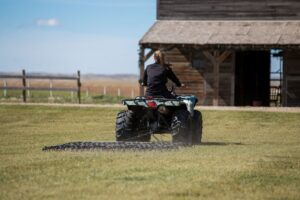
Check out our Chain Harrows!
Rotating horses and making sure not to not put too many horses out in one area is also important for maintaining growth all season.Depending on how much land there is for pasture, designating a sacrifice area with re-enforced footing can allow horses to still enjoy going out at night even if it is rainy or too dry. Monitoring horses for any changes in weight is a good indication of the health of the pasture. Horses may require additional forage sources when out in the field if the grass provided is not adequate.
There are many benefits to turning horses out at night and turnout in general is important for the health, both mentally and physically, for your horse. If you have any questions about creating a safe pastures and turnout areas for your horse, visit us at Cashmans Horse Equipment in Delaware, OH or check us out at www.cashmans.com
Cashmans Helpful Resources
Recommended For You
-
-
Stable Ground Mud Solution
$17.50





